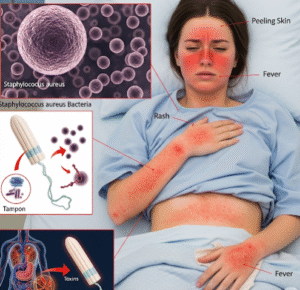Overview
Smallpox was a deadly infectious disease caused by the variola virus, which plagued humanity for centuries. It was characterized by fever, rash, and a high mortality rate. However, due to an aggressive global vaccination campaign led by the World Health Organization (WHO), smallpox was officially declared eradicated in 1980. South Korea, like the rest of the world, has been free of smallpox since then, and no naturally occurring cases have been reported in decades.
What is Smallpox?
Smallpox was a highly contagious viral disease that primarily affected the skin and internal organs. It spread through respiratory droplets or contact with contaminated objects. There were two main types: Variola major (more severe, higher mortality) and Variola minor (milder form).
Typical cases began with flu-like symptoms followed by a characteristic rash that developed into fluid-filled pustules. It often left survivors with deep facial scars, and in severe cases, it could lead to blindness or death.
Symptoms
- High fever (38.5°C or above)
- Fatigue and severe back pain
- Headache
- Vomiting (in some cases)
- Red spots on the tongue and inside the mouth
- A rash starting on the face, then spreading to arms, legs, hands, and feet
- Pustules (raised bumps filled with thick fluid)
- Scabs and permanent scars after healing
Causes
Smallpox was caused by the variola virus, part of the orthopoxvirus family. The virus spread:
- Through close contact with an infected person
- Via respiratory droplets
- Through contaminated bedding or clothing
The virus had no known animal reservoir and only infected humans.
Risk Factors
Although the disease no longer exists in the general population, risk factors in the past included:
- Lack of immunity, especially among infants and those unvaccinated
- Close contact with infected individuals or contaminated materials
- Living in areas with poor access to healthcare and vaccination (historically)
Today, the main concern is bioterrorism, as smallpox virus samples are preserved in two high-security labs in the USA and Russia.
Complications
- Severe scarring (especially on the face)
- Blindness due to eye involvement
- Encephalitis (brain inflammation)
- Sepsis
- Death (fatality rate up to 30% for variola major)
- Miscarriage or stillbirth in pregnant women
Prevention
Since natural cases no longer occur, prevention focuses on preparedness:
- Routine smallpox vaccination has been discontinued worldwide, including in Korea
- Vaccination stockpiles exist in case of emergency or bioterrorism threat
- Isolation protocols and rapid response strategies are in place for potential outbreaks
Historical prevention included:
- Mass vaccination campaigns
- Quarantine measures during outbreaks
- Contact tracing and ring vaccination
Treatment Options in Korea
- No Active Treatment for Natural Smallpox
As smallpox is eradicated, there is no treatment being administered in hospitals. However, South Korea has preparedness protocols in place through the Korea Disease Control and Prevention Agency (KDCA). - Antiviral Stockpile (for Bioterrorism Preparedness)
- Tecovirimat (TPOXX) is an antiviral approved for use against orthopoxviruses.
- South Korea maintains access to antiviral medications and smallpox vaccines through national emergency reserves.
- Vaccinia Immune Globulin (VIG) may be used in some cases of vaccine-related complications.
- Vaccination Strategy (In Case of Emergency)
- South Korea has emergency vaccination stockpiles.
- Healthcare workers and military personnel may receive the vaccine in preparation for special assignments.
- Ring vaccination strategies would be deployed in the event of an outbreak.
- Public Health Infrastructure
- The KDCA has a surveillance system and emergency response units trained for infectious disease threats.
- Collaboration with WHO and international agencies ensures Korea is prepared for rare biological threats.













